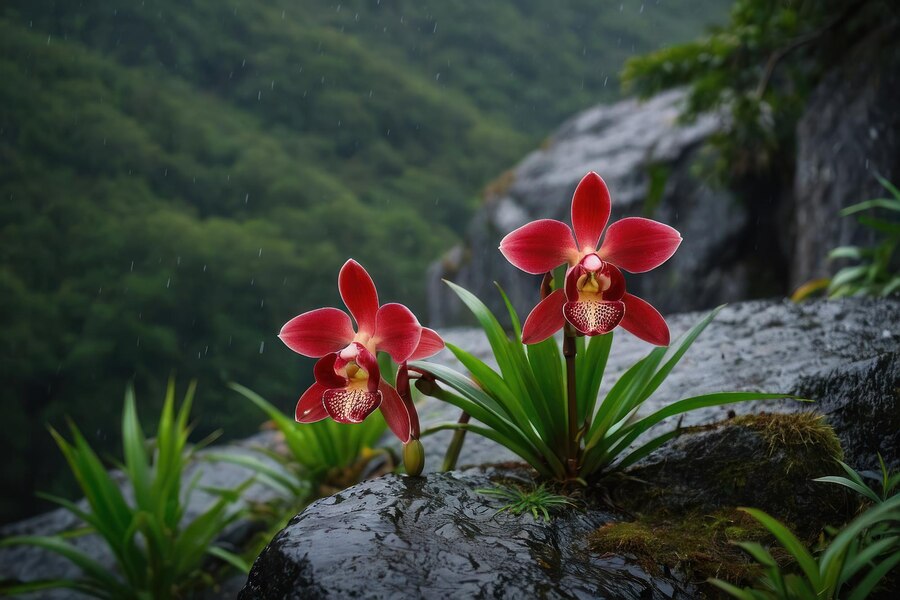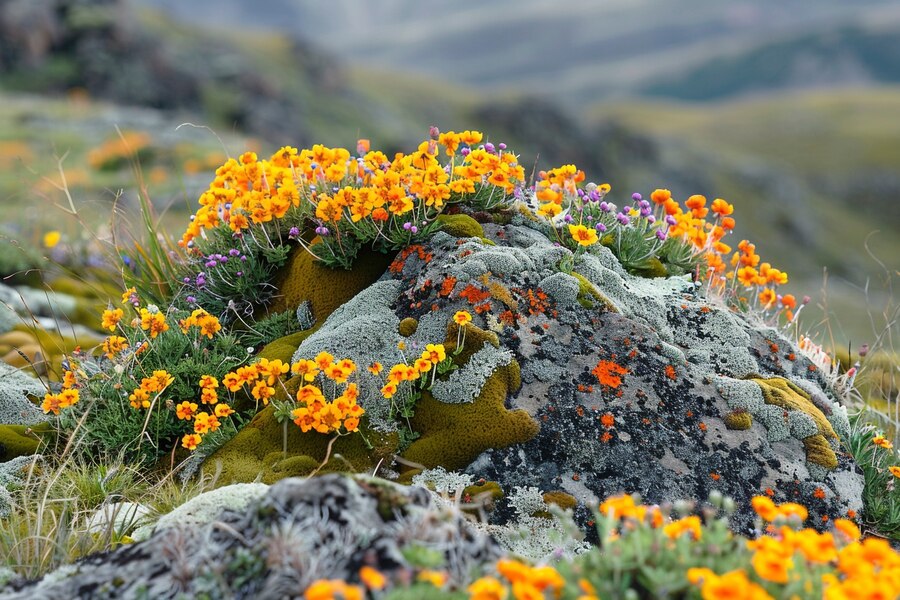Saussurea obvallata, often shrouded in mystique and reverence, is a flower that captivates botanists and nature enthusiasts alike. This elusive bloom, found in the rugged terrains of the Himalayas, holds a significant place in both ecological and cultural narratives.
What is Saussurea Obvallata?
Saussurea obvallata is a species of flowering plant in the family Asteraceae. Commonly known as the Brahma Kamal in India, this flower is named after Brahma, the Hindu god of creation, symbolizing purity and divine beauty.
Historical Significance
The historical significance of Saussurea obvallata is profound. In various cultures, especially within Hindu and Buddhist traditions, the flower is revered and often associated with spiritual ceremonies. Historically, it has been used in traditional medicine, believed to possess healing properties.
Geographical Distribution
Native to the high-altitude regions of the Himalayas, Saussurea obvallata thrives in the alpine climates of India, Bhutan, Nepal, and parts of China. It typically grows at elevations ranging from 3,000 to 5,000 meters, often found on rocky slopes and crevices.
Unique Characteristics
The physical appearance of Saussurea obvallata is nothing short of enchanting. The plant boasts large, white or pale pink blossoms encased in greenish bracts, which protect the delicate flowers from the harsh mountain climate. The bloom cycle is peculiar; it usually flowers during the monsoon season, from July to September, and each blossom lasts only a few days.
Ecological Importance
In the fragile ecosystem of the Himalayas, Saussurea obvallata plays a vital role. It is a crucial food source for various insects and pollinators. The plant also aids in stabilizing the mountainous soil, preventing erosion.
Medicinal Properties
Traditionally, Saussurea obvallata has been utilized in various medicinal practices. It is believed to have anti-inflammatory and analgesic properties. Modern research has started to uncover its potential in treating ailments such as respiratory disorders and joint pains.
Conservation Status
The conservation status of Saussurea obvallata is currently concerning. Due to overharvesting and habitat destruction, it is classified as a vulnerable species. Conservation efforts are underway, focusing on habitat protection and sustainable harvesting practices.
Growing Saussurea Obvallata
Cultivating Saussurea obvallata outside its natural habitat is challenging but not impossible. It requires specific conditions: cool temperatures, well-drained soil, and partial shade. Gardeners interested in growing this plant should replicate its natural alpine environment as closely as possible.
Saussurea Obvallata in Popular Culture
Saussurea obvallata holds a special place in popular culture. It is often depicted in art and literature, symbolizing purity, spirituality, and rarity. In Indian folklore, it is said that seeing the bloom brings good fortune.
Challenges in Conservation
The primary threats to Saussurea obvallata include overharvesting for medicinal and ornamental purposes, habitat destruction due to tourism and development, and climate change. Conservationists are working to address these challenges through various strategies, including legal protection and community awareness programs.
Saussurea Obvallata and Climate Change
Climate change poses a significant threat to the habitat of Saussurea obvallata. Rising temperatures and unpredictable weather patterns can disrupt its blooming cycle and reduce its habitat range. Adaptive measures, such as creating micro-reserves and assisting in the plant’s migration to higher altitudes, are being considered.
Ethical Harvesting
Ethical harvesting of Saussurea obvallata is crucial for its survival. This involves adhering to sustainable practices, such as collecting only a small portion of the population and ensuring that the plant can regenerate. Legal regulations also play a role in preventing overexploitation.
Scientific Research and Studies

Scientific interest in Saussurea obvallata has grown over the years. Researchers are exploring its ecological roles, medicinal properties, and potential for conservation. Future studies aim to understand its genetic diversity and develop strategies for its sustainable use.
Conclusion
Saussurea obvallata, with its ethereal beauty and ecological significance, is a true marvel of the Himalayas. Protecting this delicate flower requires concerted efforts from conservationists, researchers, and local communities. By understanding and appreciating its value, we can ensure that future generations continue to witness its enchanting bloom.
FAQs
What is the common name of Saussurea obvallata?
The common name of Saussurea obvallata is Brahma Kamal.
Where can Saussurea obvallata be found?
Saussurea obvallata can be found in the high-altitude regions of the Himalayas, including India, Bhutan, Nepal, and parts of China.
What are the medicinal properties of Saussurea obvallata?
Saussurea obvallata is traditionally used for its anti-inflammatory and analgesic properties, and modern research suggests potential benefits for respiratory disorders and joint pains.
How can Saussurea obvallata be grown at home?
To grow Saussurea obvallata at home, replicate its natural alpine environment with cool temperatures, well-drained soil, and partial shade.
What are the threats to Saussurea obvallata?
The primary threats to Saussurea obvallata include overharvesting, habitat destruction, and climate change.
